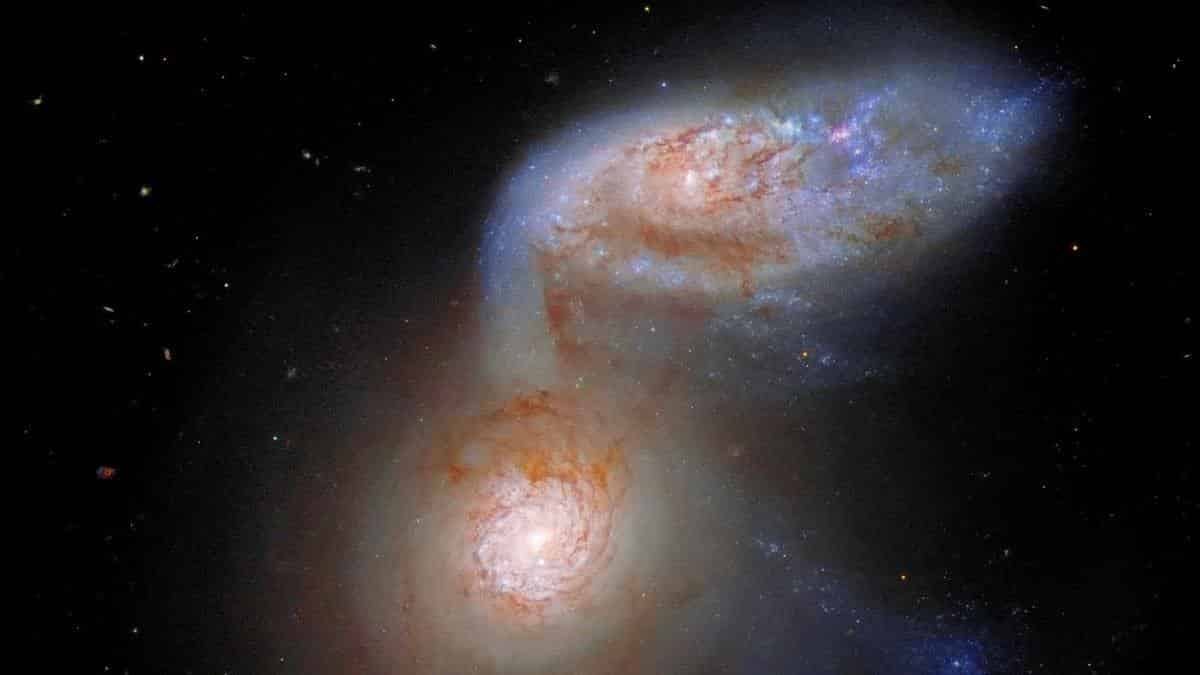NASA Releases a Spectacular Image of Two Galaxies Locked in a Cosmic Dance
The larger galaxy appears as a massive spiral on a black canvas, whereas the smaller galaxy appears as an illuminated rock.

NASA has released a stunning image of two strange galaxies locked in a cosmic dance. The event, which took occurred in the constellation Pegasus at a distance of nearly 220 million light-years from Earth, was photographed by NASA’s powerful Hubble Space Telescope. A network of light-emitting threads almost connects the small galaxy to its much larger neighbour in this image. According to NASA, the gravitational attraction between the two galaxies will eventually cause the smaller galaxy to be thrown out into space or swallowed by the larger one.
The larger galaxy, NGC 7753, looks as a massive structure against a black canvas, but the smaller galaxy, NGC 7752, seems like an illuminated rock. These galaxies are collectively known as “Arp 86,” indicating that they were included in astronomer Halton Arp’s Atlas of Peculiar Galaxies in 1966.
The Hubble discovered Arp 86 as part of a bigger endeavour to study the relationships between young stars and the cold gas clouds in which they originate, NASA stated in a statement. Hubble relies on data from ALMA, a massive radio telescope positioned high in the Chilean Andes, for these observations. These Hubble observations, according to NASA, give “a treasure trove of data” for scientists trying to figure out how stars form.
Astronomers will have more detailed observational data sets to investigate star formation in dusty regions like those in the galaxies of Arp 86 after the James Webb Space Telescope, a joint effort of the American and European space agencies, is launched later this year.
“Hubble has had a fantastic run.” “Can’t wait to see what JWST has in store for us!” one user exclaimed.
In 1990, the Hubble Space Telescope was launched. Since then, it has recorded almost 1.3 million observations. On December 18, the JWST will be launched.


